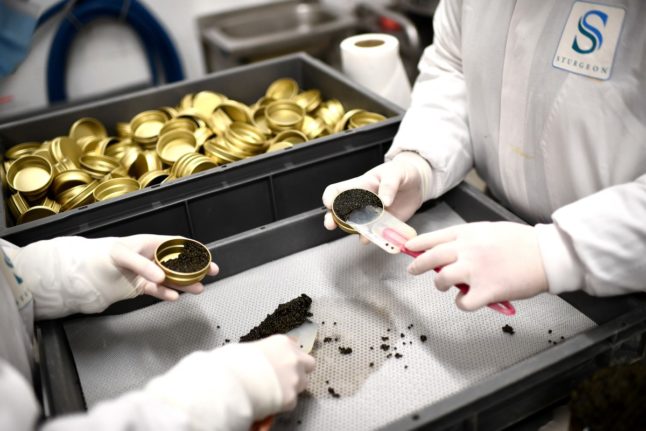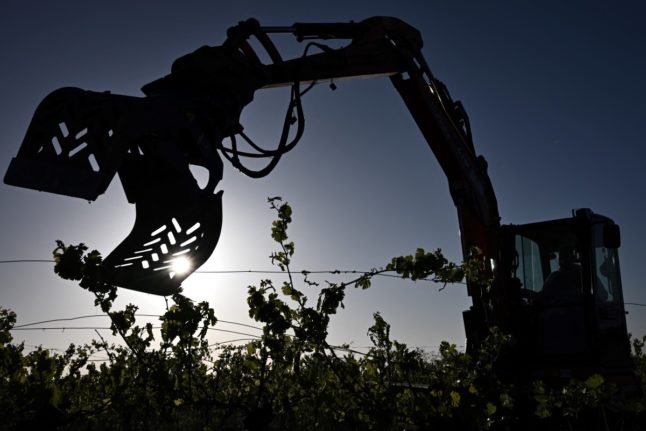“I’m measuring the eggs to be able to classify them. Above a certain size, they’re premium,” said Magdalena Puaud, wearing a hair net and face mask.
The fish roe, once sorted and left to mature in small tins for several months, will be sold in France and abroad for €2,000-10,000 a kilo.
Caviar was first introduced to France around a century ago by Russian aristocrats who had fled their home country after the 1917 revolution.
The southwestern region of Aquitaine, which is naturally home to sturgeons, started to produce the delicacy in the 1920s and is today home to four caviar farms that make up 90 percent of all French production.
After a decade of lobbying, Aquitaine’s farms are looking forward to their caviar finally receiving an EU certificate of origin in the new year.
According to the European Union, “geographical indications” protect products against misuse or imitation of the registered name and guarantee their true origin to customers.
“We have nothing to hide,” said Laurent Dulau, the managing director of the biggest of Aquitaine’s farms in Saint-Fort-sur-Gironde, which produces 20 tonnes of fish roe a year.
He and fellow producers hope the EU stamp of approval will allow them to stand out in a market nowadays dominated by China and awash with opaque labelling.
“We’re going to guarantee total traceability – origin, environmental responsibility and sustainability, and no genetically modified organisms or antibiotics,” he said.
Last week, in the runup to Christmas, French authorities seized and destroyed 17 kilos of caviar worth some €35,000 for not following health and safety guidelines, including not identifying its country of origin.
Near the sturgeon pools in Saint-Fort-sur-Gironde, employees fished out females and examined them one by one, a man rolling an ultrasound over their plump white bellies.
“Caviar,” he shouted when he saw semi-circles on his monitor, indicating the fish was ready to be sliced open.
When the eggs were not yet big enough or too mature, the fish was sent shooting down a slide back into the water.
The label “validates the way we work,” said fish production manager Nicolas Proust.
Dulau said the certificate of origin would help French producers compete against huge quantities of cheap Chinese caviar.
“There are 600 tonnes of caviar produced in the world, and China alone produces 250 tonnes, while France produces just 50 tonnes,” he said.
Francoise Boisseaud, who buys up French caviar and mostly sells it abroad, agreed the new EU guarantee was good news.
“France is a small country,” she said. “We are forced to bank on quality, not quantity. It’s strategic.”



 Please whitelist us to continue reading.
Please whitelist us to continue reading.
Member comments